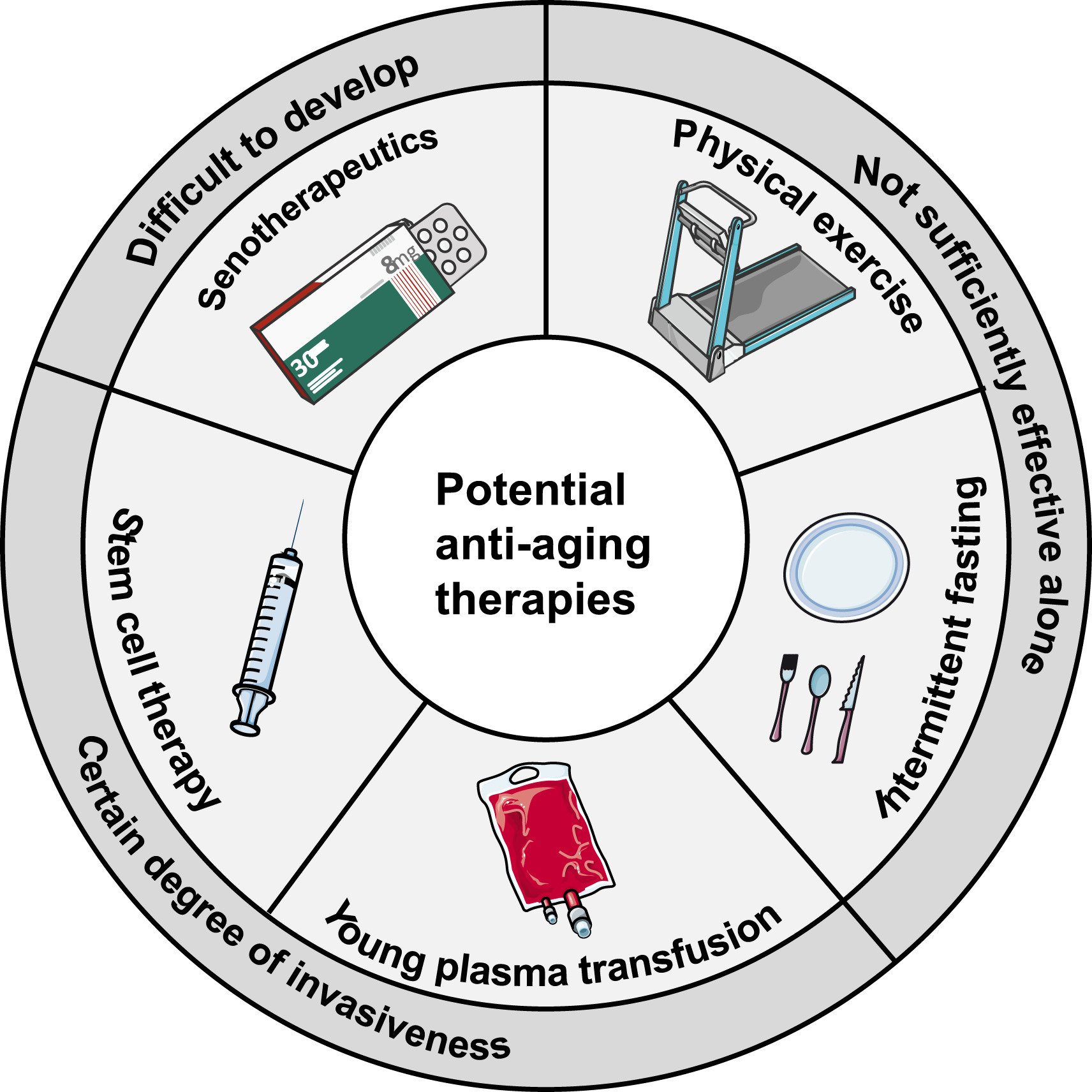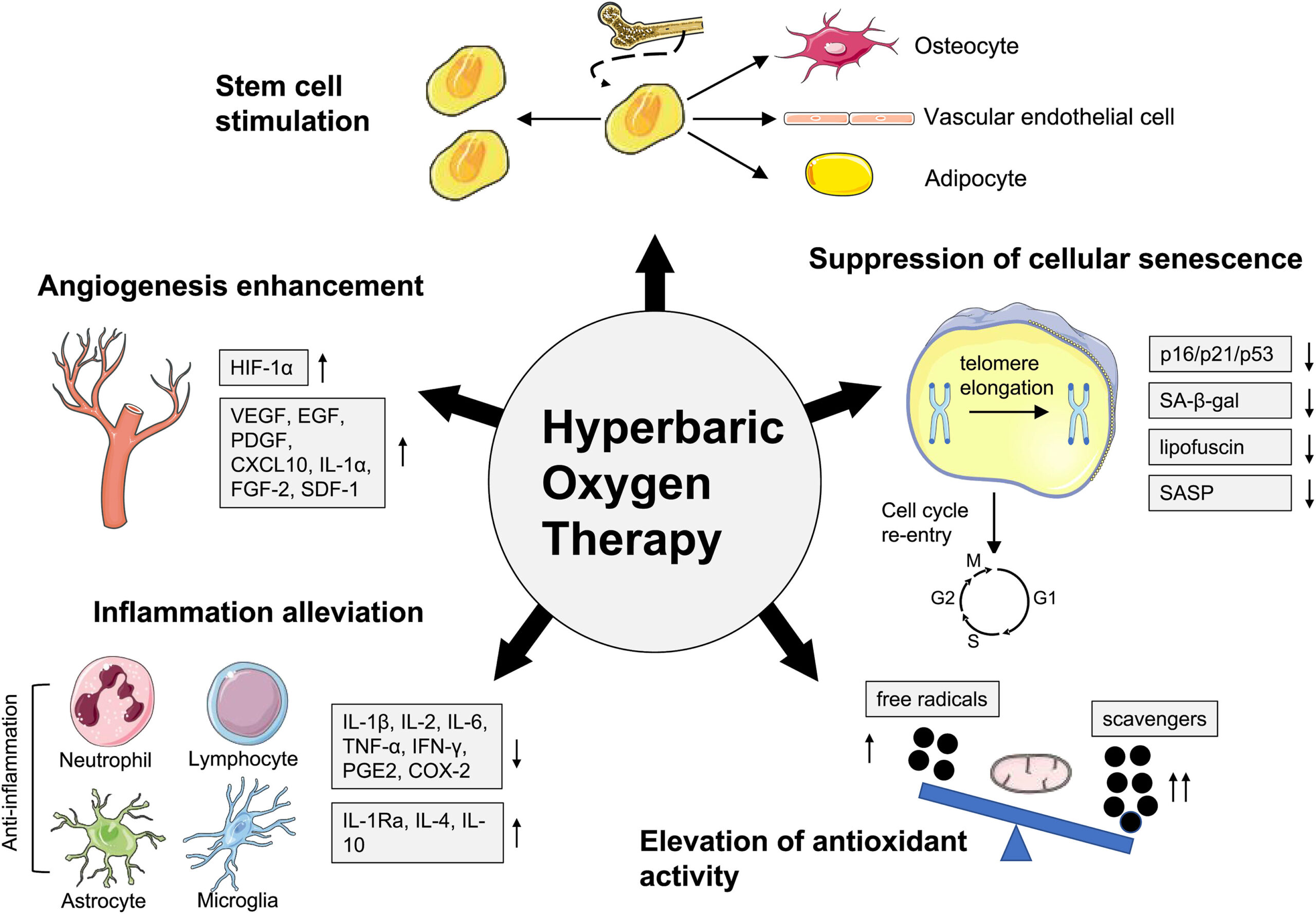The Therapeutic Effects of Hyperbaric Oxygen Therapy on Anti-Aging
Abstract
Hyperbaric oxygen therapy (HBOT) is a therapy that has become an established treatment for a variety of conditions. It involves inhaling 100 percent oxygen inside a hyperbaric chamber that is pressured to more than 1 atmosphere (atm). This procedure is highly safe and effective compared to other treatments, such as steam cell therapy, among others. Celebrities like Justin Bieber and Michael Phelps favor HBOT, which is gaining popularity for anti-aging concerns. The traditional concept that oxygen may play a significant role in accelerating aging may not be accurate. The clinical tests concerning hyperbaric oxygen therapy (HBOT) have shown some remarkable results in anti-aging.
Aging is inevitable, but fortunately, there’s plenty you can do about it. Hyperbaric oxygen therapy is a treatment that releases a higher amount of air into your lungs in comparison to normal conditions. Under these circumstances, these higher oxygen levels always provide something new to our bodies that help us stay healthy. HBOT promotes anti-aging healing when the body is exposed to extra oxygen in the blood. It activates growth factors and creates a shield, interacting with the harmful cells to fight against them.
Introduction:
As we age, our physiological functions gradually decline, making us more susceptible to age-related diseases. Despite multiple efforts to slow down or prevent this natural process, current options such as plasma therapy, stem cell therapy, fasting, and exercise have their limitations. That’s where hyperbaric oxygen therapy (HBOT) comes in. This non-surgical treatment involves breathing pure oxygen in a pressurized chamber, which has been shown to potentially slow down cellular aging and improve cognitive function in older adults. In addition, it may help to mitigate the effects of age-related conditions such as dementia and stroke. While further research is needed on its long-term effects, hyperbaric oxygen therapy offers hope for a simple yet effective approach to healthy aging.

Reference Image: HBOT
Hyperbaric oxygen therapy (HBOT) is an increasingly popular treatment that involves exposing the body to 100% higher oxygen than expected at a pressure greater than 1 atm absolute. HBOT has since been shown to effectively treat a wide range of medical conditions, including non-healing wounds and infections, which was earlier limited to hypoxia-related conditions. By creating a pressurized capsule or tube which can release high oxygen levels, HBOT increases the oxygen levels dissolved in the plasma and arterial partial pressure. This increased oxygen supply aids in healing and fighting infection. HBOT is now widely recognized as an essential tool in acute and chronic treatment plans. [Ref. Link 1] [Ref. Link 2]
Anti-Aging Benefits of Hyperbaric Oxygen Therapy
The effects of substance abuse on human life expectancy are well-known and often discussed. However, it is crucial to remember that other stressors and insults can also cause premature aging in the body. Any of these factors can lead to a loss of reserve capacity and, ultimately, a shortened lifespan, from environmental pollutants to trauma to systemic infections. It is essential to consider the cumulative impact of these various stressors, as they can significantly impact our longevity. Taking steps to limit exposure to harmful substances and protect our bodies from physical and biological insults can add years to our lives. And while we may not have control over every aspect that contributes to aging, being aware of the potential effects can help us make informed choices for self-care and longevity.
Hyperbaric oxygen therapy, or HBOT, has effectively treated chronic brain wounds regardless of their origins. As demonstrated by doctors such as Harch and Neubauer, low-pressure hyperbaric oxygen can repair these injuries and improve neurological function, cognitive abilities, behavior, and emotions. It is considered a generic treatment due to its effectiveness in treating multiple types of brain wounds. Those who have previously noticed some improvement in their health condition have hope thanks to this innovative therapy.
Working Methodology
Understanding the aging process at a molecular level has advanced significantly in recent years, leading to significant potential therapeutic discoveries for age-related diseases. Similarly, research shows the potential advantages of hyperbaric oxygen therapy (HBOT) for tissue homeostasis and regeneration. Notably, HBOT has also shown promise in treating age-related diseases and slowing the aging process.
A recent study found that HBOT induced changes in gene expression in healthy aging subjects, suggesting a potential role in the aging process. Further research can assist in fully understanding the impact of HBOT on aging and age-related diseases. However, this growing body of evidence suggests promising possibilities for incorporating HBOT into overall strategies for improving health in older adults. [Ref. Link 3]
HBOT can aid in promoting healthy aging through its ability to enhance mitochondrial function. Mitochondria are the power sources of our cells, responsible for generating energy and maintaining cellular health. There are five specifically proven ways of HBOT stimulating anti-aging mechanisms:
- HBOT has been shown to induce angiogenesis, the formation of new blood vessels. One of these mechanisms is the increased production of HIF-1α, a protein that activates genes involved in angiogenesis (formation of new blood vessels). This allows for improved oxygen delivery to cells.
- Hyperbaric oxygen therapy (HBOT) significantly impacts inflammation in the body. By regulating the activity of inflammatory cells such as neutrophils and lymphocytes, HBOT reduces inflammation at a cellular level.
- The use of hyperbaric oxygen therapy (HBOT) shows to modulate the balance between free radicals and scavenging antioxidants in the body. This process is closely linked to the regulation of mitochondrial function, as mitochondria are a significant source of free radicals and play a crucial role in producing cellular energy.
- The detrimental effects of cellular senescence can be counteracted by hyperbaric oxygen therapy (HBOT). This therapy has been shown to prompt cell cycle re-entry and decrease markers associated with senescence, such as p16/p21/p53, SA-β-gal, lipofuscin, and the senescence-associated secretory phenotype (SASP). HBOT additionally inhibits telomere shortening, a significant trigger of cellular senescence. These effects suggest that HBOT may potentially be a therapeutic intervention for age-related diseases.
- Hyperbaric oxygen therapy (HBOT) effectively promotes stem cell mobilization, proliferation, and differentiation. This is due to the increased oxygen levels in the blood during HBOT, which enhance cellular function and stimulate the release of stem cells from their niches into circulation.

Reference Image: HBOT
Case Study Conducted on HBOT for Anti-Aging
A recent study has demonstrated the potential for hyperbaric therapy to reverse aspects of the aging process. Researchers of Tel Aviv University and Shamir Medical Center observed an increase in telomere length and a decrease in senescent cells in participants who underwent regular hyperbaric sessions. Telomeres protect chromosomes from damage and deterioration, while senescent cells can negatively affect tissue function and overall health. These findings suggest that hyperbaric therapy may slow the effects of aging on a cellular level. Though further research can be conducted to fully determine the mechanism behind these results, this study provides promising evidence for the anti-aging capabilities of hyperbaric therapy.
“In the current study, we wished to examine the impact of HBOT on healthy and independent aging adults and to discover whether such treatments can slow down, stop or even reverse the normal aging process at the cellular level.”
- Source SciTechDaily
Conclusion:
While some may view hyperbaric oxygen therapy with skepticism or caution, it is crucial to understand that this treatment option is highly safe. The patient must be under the care of a medical expert, and the therapy itself is non-invasive. It has effectively treated a wide range of chronic conditions and wounds with minor risks. Overall, the benefits of hyperbaric oxygen therapy far outweigh any potential risks, making it a safe and advantageous option for patients needing increased oxygen levels, anti-aging, and accelerated healing.





